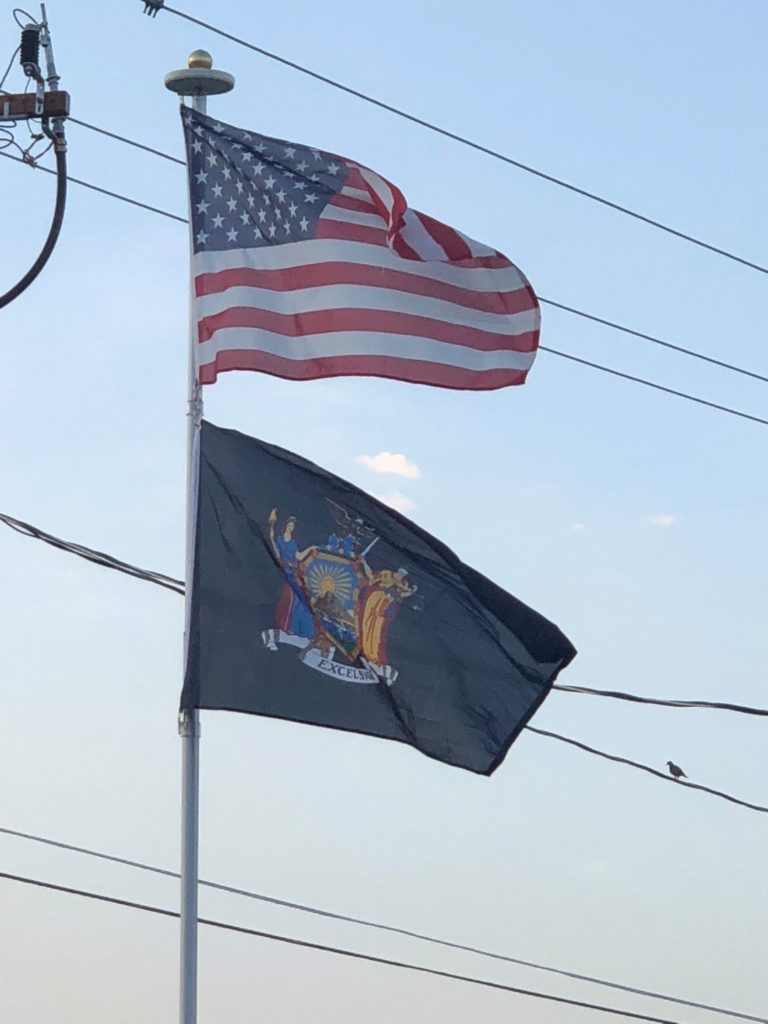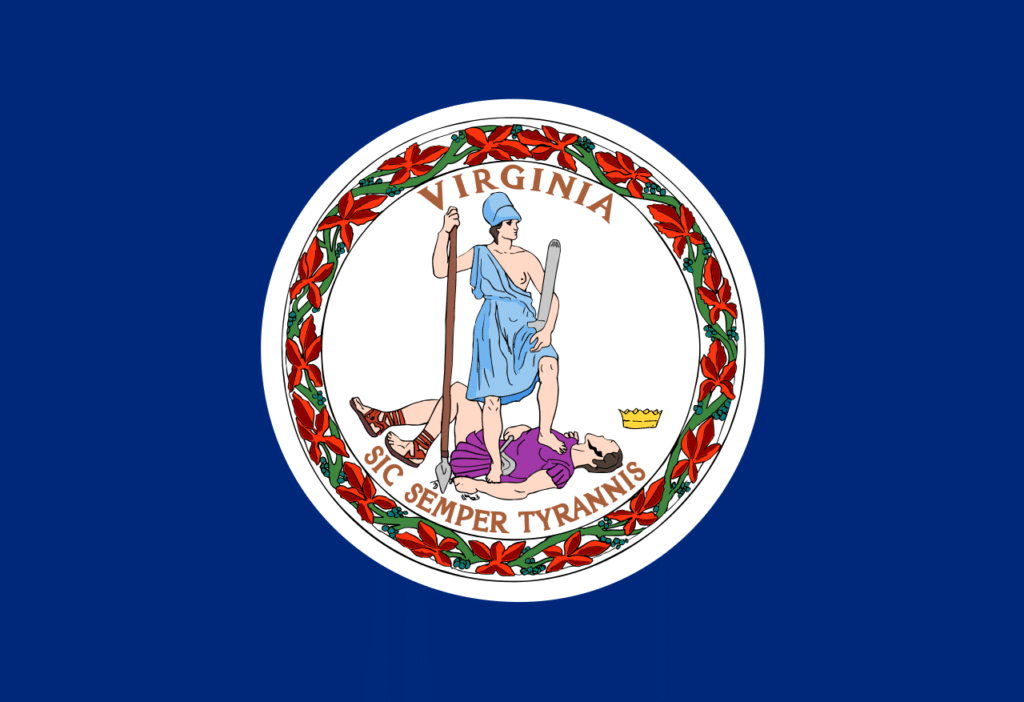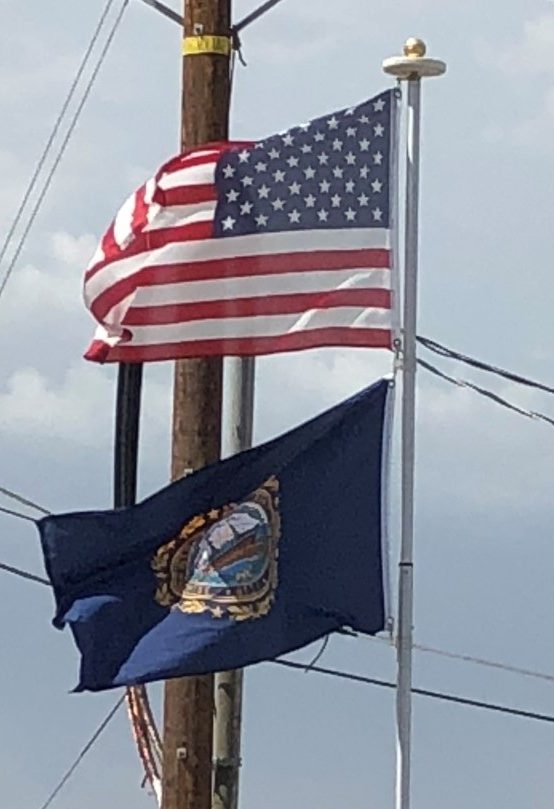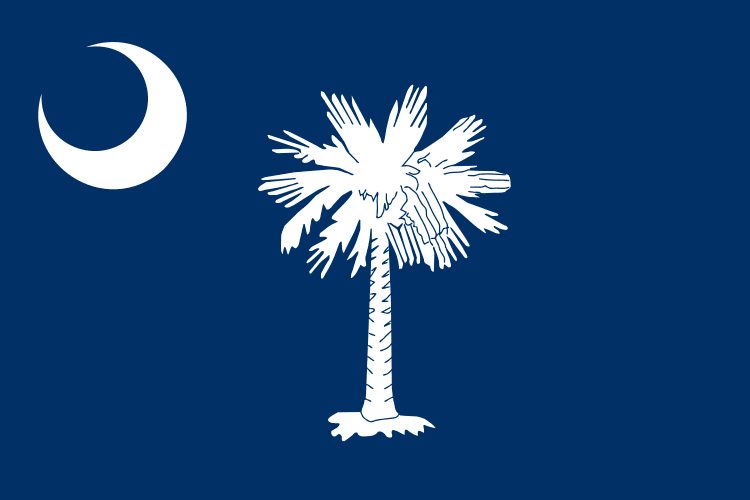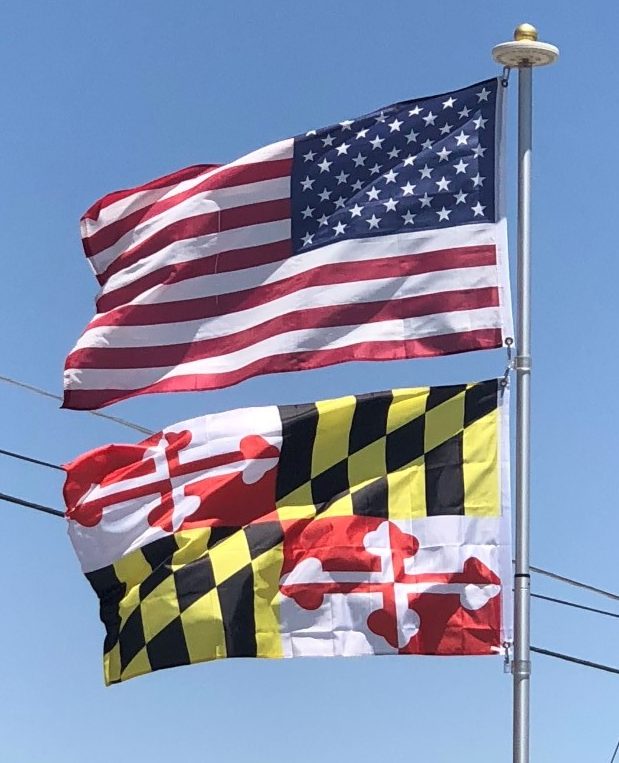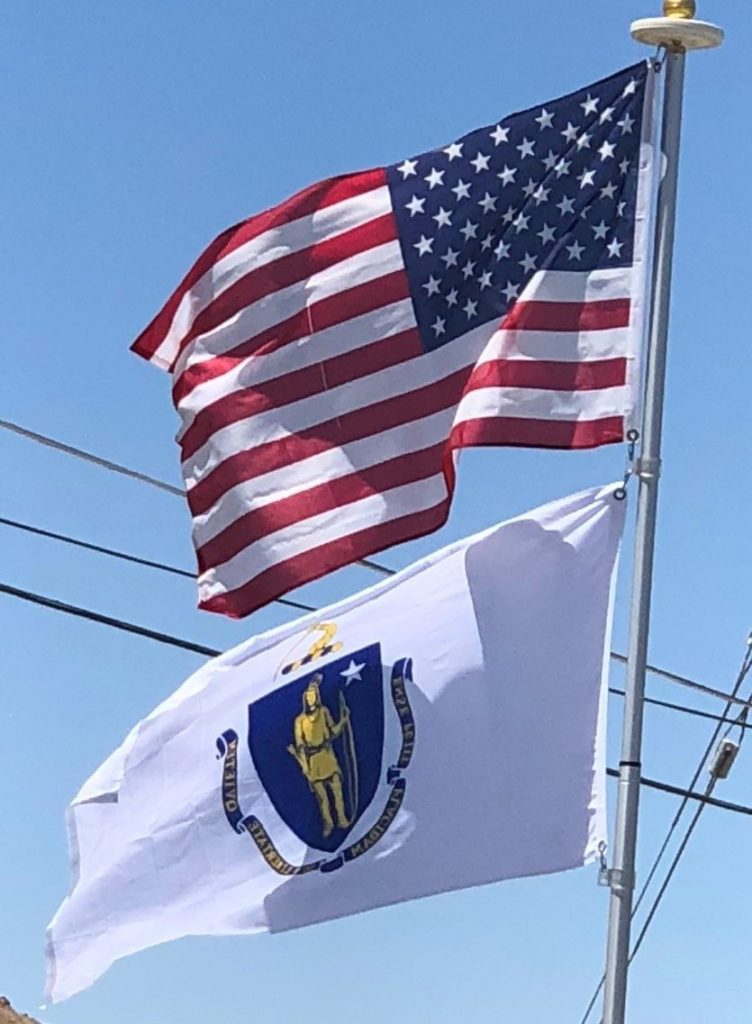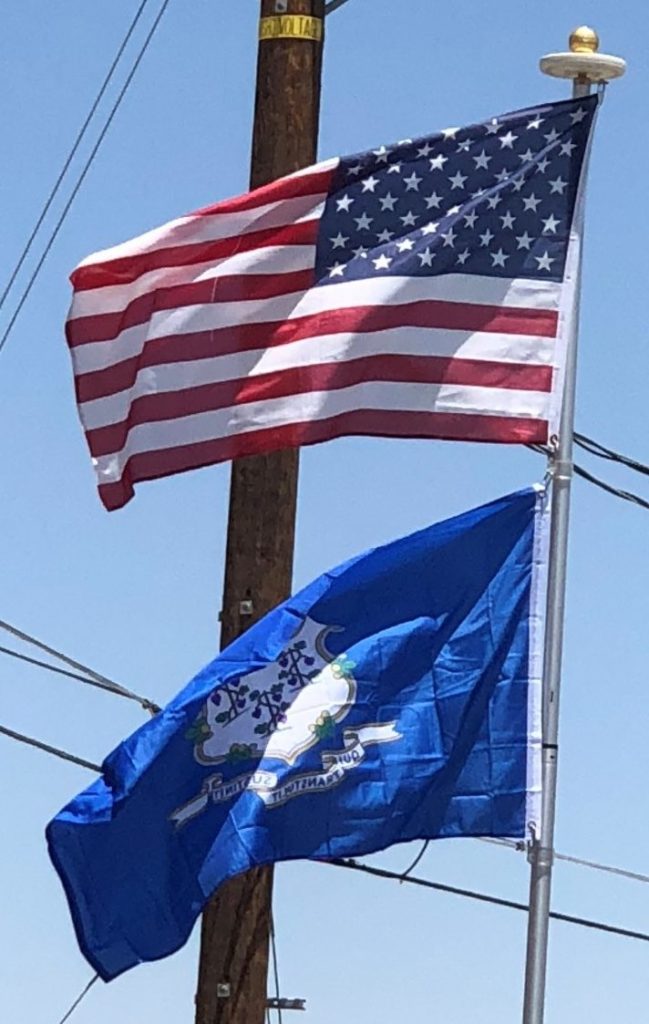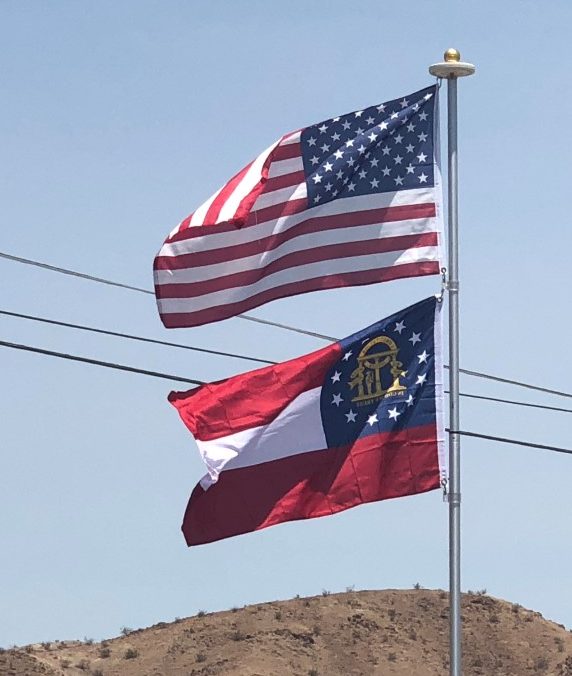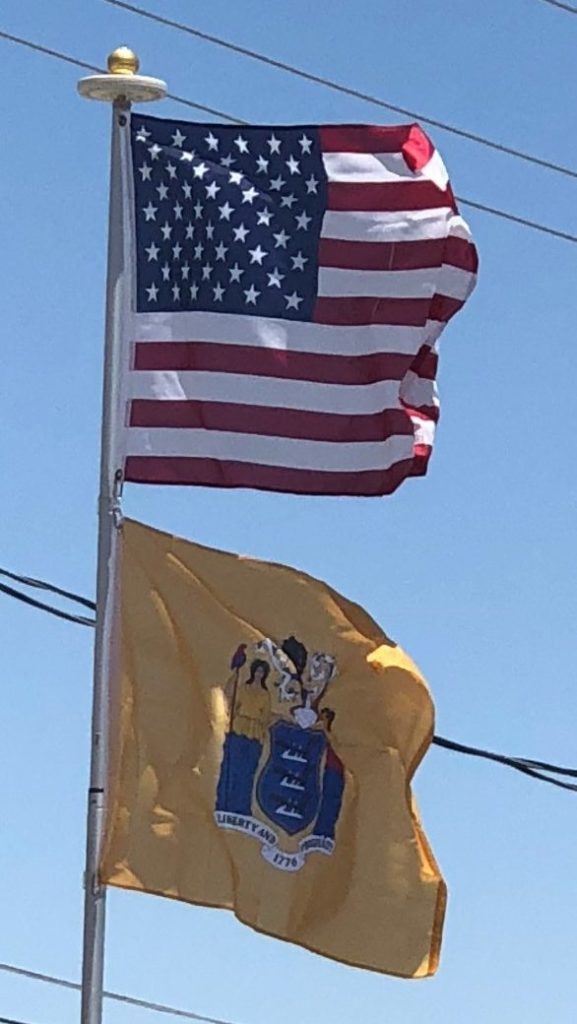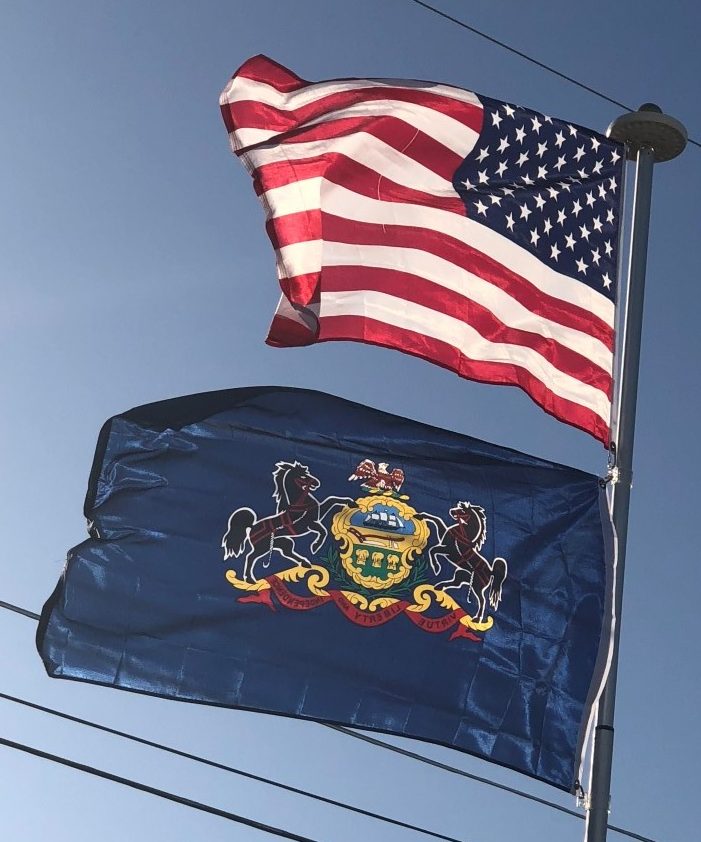New York – The Empire State
The flag of the state of New York is the coat of arms on a solid blue background. The state seal of New York is the coat of arms surrounded by the words “The Great Seal of the State of New York.” The legislature changed the field of the flag from buff to blue by a law enacted on April 2, 1901.[2]
The shield displays a masted ship and a sloop on the Hudson River (symbols of inland and foreign commerce), bordered by a grassy shore and a mountain range in the background with the sun rising behind it.
The shield has two supporters:
Left: Liberty, with the Revolutionary imagery of a Phrygian cap raised on a pole. Her left foot treads upon a crown that represents freedom from the British monarchy that once ruled what is now New York as a colony.
Right: Justice, wearing a blindfold (representing impartiality) and holding scales (representing fairness) and a sword.
A banner below the shield shows the motto Excelsior, a Latin word commonly translated as “Ever Upward.”
The shield is surmounted by a crest consisting of an eagle surmounting a world globe.
